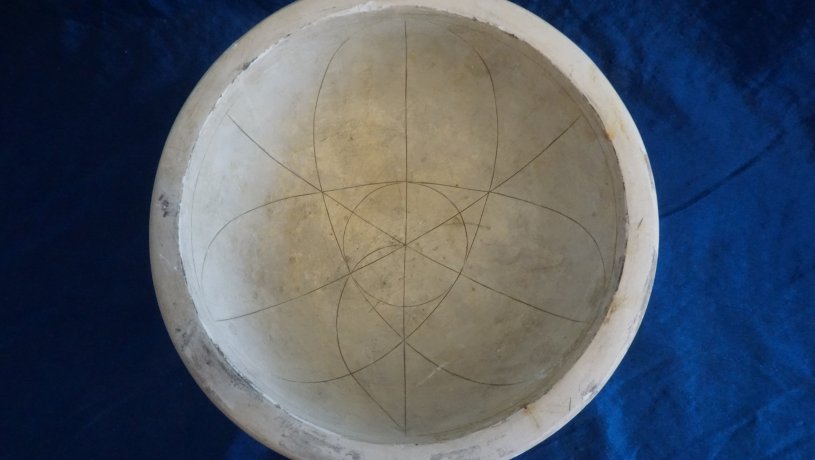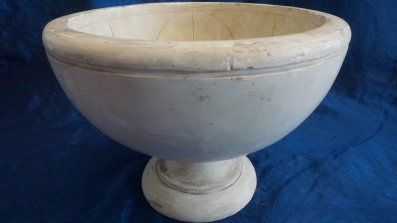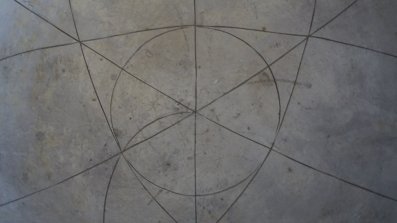Trajectories of a Particle in a Bowl
Model II 6 relates to the classical mechanical problem of finding the trajectory of a point moving in space, under certain assumptions. The shape of the model is a spherical bowl, cut out by removing half of a sphere from a solid block. In the spherical bowl, consider placing a particle at the height of the centre of the sphere defining the bowl (on the "equator") with a given speed (in the horizontal direction tangent to the sphere). We assume no external forces are acting other than gravity. The model displays a nice closed trajectory (the trajectory is periodic - repeating itself). Seen from above on the model, the closed trajectory is the path which resembles a flower with three petals.
Consider varying the initial speed of the particle, and then measuring the lowest point in its trajectory. Different speeds will give different lowest points. On the model, the locus of such lowest points (the curve of lowest points for different velocities) is displayed as the curve winding its way into the bottom of the bowl.
This dynamical system is in fact equivalent to another, again under appropriate assumptions. Consider attaching a particle to a pendulum held in the centre of the sphere, with its length $l = r$, where $r$ is the radius of the sphere. Giving the particle the same inital speed in the horizontal direction as before, with no forces other than gravity acting, will give the exact same trajectory.




